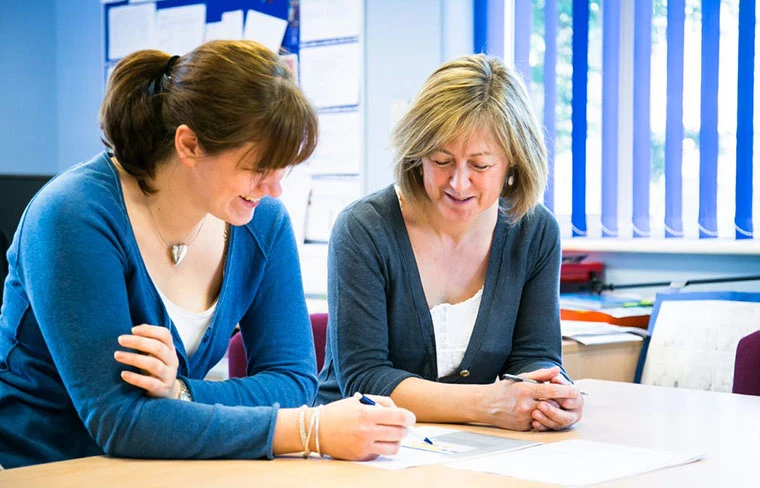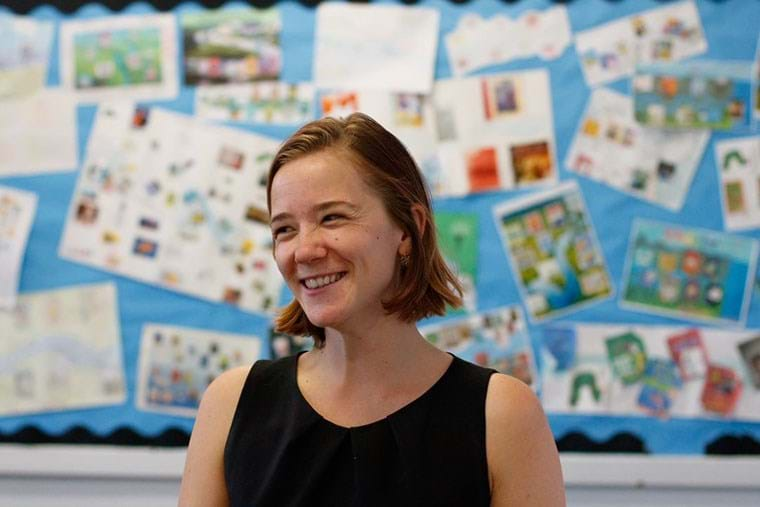“ ”
Beginning the project
Michael goes on: "I began by looking at PASS and thinking about targeting particular groups of students. I had read a lot of GL Education’s information about fragile learners and felt that this was a really nice way in – providing a narrower focus that could be implemented in a straightforward way. PASS would allow us to shine a light on certain groups that may otherwise be overlooked, and teachers could get their head around the data quite quickly. By cross-referencing the PASS attitudinal measure for perceived learning capability with the students’ mean CAT4 scores, we could identify fragile learners and put in place a series of interventions to support their development.
With fragile learners, we’ve got a group of students that could be completely missed – if teachers aren’t cross-referencing the CAT4 data on those who have potential for high ability with the information from PASS, they might mistakenly assume that the student is doing OK and achieving as expected. But it’s only when you combine the data that you get insights into these groups of students.
The staff have really liked the fact that we’re not just using data in isolation – and by focusing on fragile learners, it’s meant that the team weren’t overwhelmed with having to look at all the factors at one time.”
Using data to baseline and guide interventions
Michael began by identifying the fragile learners within Year 7. This was done by comparing ability data from CAT4 with attitudinal data from their latest PASS survey.
Once this group had been identified, Michael reviewed the accompanying PASS Interventions, available to all schools taking the survey. Specific and practical strategies are provided for each PASS factor, helping teachers to better understand each measure and implement effective follow-up action where low scores are seen.
Michael explains: “My project started in term 1 of the 2019/20 academic year. I wanted to generate baseline data at the end of term 1 and then monitor things through the rest of the year to see the impact. It made sense to start with the youngest secondary students as I was head of that year group – but the more I read about fragile learners, the more I could see that these interventions would have the most impact the earlier we intervened, so this would be the best group to start with.
I focused on the interventions that were suggested for fragile learners, ones that were easy to implement across the year group but that would lead to a positive impact for all students. For example, recognising effort and celebrating success. We’ve spent a lot of time as a school looking at growth mindset – so this was in tune with our school philosophy.
We also looked at measuring progress – getting students to look at their reports, be reflective, see where they are and where to move forward. Also doing things like graphical organisers, checklists and colour coding to explore what they know and what they’re not yet confident with.
We looked at other interventions that are really nice to pull into tutor time, such as debating and encouraging curiosity through use of questioning. I created a set of resources that would foster and encourage debate and critical thinking skills and shared them with my tutors to roll out and use. To complement this, I enlisted the science faculty (of which I’m part) to push recognition and a focus on measuring progress.”

“ ”
Using ability data to identify students with a verbal deficit
Many of the students who were identified as fragile learners also had a verbal deficit (where there is a significant difference between a student’s CAT4 verbal and non-verbal scores). This is typically seen in EAL learners and is an indicator that specific literacy support is needed.
Michael explains: “What helped to focus my project even more was the recognition that a lot of the students who were fragile learners also had a substantial verbal deficit. Within our Year 7 cohort of 173 students, 21 were fragile learners and of those, 14 had a verbal deficit.
I knew that any interventions we did that focused on developing English and reading would therefore be beneficial, so I involved the Head of EAL and worked with them to plan appropriate activities.
I also collaborated with our counsellors to devise an extended session, centred around students identifying and managing emotions. This session ran during the lockdown period when we had student survey data to show, not unexpectedly, that a number of students felt frustrated, anxious or demotivated.”
Getting the teaching staff on board
With this type of project, particularly in a secondary setting, it is vital to get the teaching team on board to ensure that the interventions are being applied consistently across all areas.
Michael explains: “Within a secondary school, students have a wide number of teachers – so for an intervention to have maximum impact, we need as many of those teachers as possible putting the measures into effect.
But with assessment data, there’s such a disparity in what teachers may already know – and that’s one of the challenges when you’re trying to talk to them about data and interventions. So before I began the project, I wanted to understand where our staff were. Did everyone understand what the term ‘fragile learner’ means? Were they confident with the CAT4 and PASS data, and understood the reports?
I carried out a staff survey to find out what their confidence and understanding was. This made it clear that there was a lack of understanding of what a fragile learner was – so I put together a session and a presentation on how I’d used the data to identify this group and explained some of the interventions that PASS suggested would be useful. I think they were quite reassured to see that often the suggested interventions are not things that teachers wouldn’t have heard of before – there’s no ‘magic bullet’. But it’s a case of taking opportunities to do them more often, more consistently across all classes, and to have some structure in place around the interventions.
I also wanted to ensure that everything we did could be rigorously evaluated with data – so there’s not just qualitative evidence, but quantitative too. I wanted to show that work you do on something like attitude can have a meaningful impact. And with PASS it means that there is a way to quantify it.
Everything now is evidence based, so it makes it easier for teachers to get on board as we can demonstrate the impact that the project had.”
“ ”

The impact of the project
Although the last term of the year has been affected by Covid-19 and the students having to learn remotely, the school has already seen the impact of the interventions that were put in place.
Michael explains more: “In the end of term 2 data, which was my first check to see how things were going, across Year 7 as a whole there was, on average, an increase in both attainment and progress. But I was really pleased to see that the level of increase was higher for the fragile learner group.
If you’re a student who has a low perceived learning capability and you’re seeing your report showing progress – then that’s got to be a good thing. So already there is impact.”
During lockdown, the project continued with lots of emphasis on celebrating success and recognition of effort. Michael explains: “As head of year, tracking the more vulnerable students has become more challenging during this period of online learning – but equally more important than ever!
I have up-scaled the use of recognition, praise and celebration of effort, attitudes and successes to try and enhance the perceived learning capability of our learners during this time. I came up with a few nice ideas like weekly emails to really encourage those students who are attending all the online sessions and completing the work required. I diarise time each week to do this, to ensure I’m doing it consistently.
We have just received the end of term 3 data, which shows another increase in attainment and progress levels for the fragile learners – albeit a smaller increase than the previous term. I am not surprised by this, due to the change to online learning which our student survey data showed was certainly not as enjoyable as being in normal school lessons!
But overall, I was happy to see that there hadn’t been a dip in attainment and progress during the online learning period and that our students had engaged well, and shown an impressive level of resilience and adaptability.”
Using the interventions going forwards
Looking forward to the next academic year, Michael hopes to roll out some of the interventions to Year 8 – and also discuss applying them in the primary school.
He explains more: “I’m hoping to do more work with the Head of Key Stage 3 to look at Year 8 as well as continuing with the new Year 7 cohort. I’d also like to see this going down into primary – as the earlier the interventions are put in place, the more impact they can have.
I’d love there to be a ripple effect with this project. The work that we’ve done using the tutors and the science faculty can be applied to the wider staff and spread out quickly from there.”
And overall, the project has shown that using attitudinal data to target certain groups works.
Michael explains: “The project has given me a way to use the data in a smart way – shining a light on students who might otherwise get missed. The PASS toolkit has also made it clear that we don’t need to go away and suddenly re-learn how to teach or work with students – it’s reassured me that a lot of what we do in class is already going to be helping the students, but it’s prompting you as a teacher to be aware and to use these strategies consistently.”

The PASS Interventions
PASS now includes a range of detailed interventions, aligned to each of the nine attitudinal measures. These contain practical advice and solutions, designed to help schools address the problems their students may be struggling with. Guidance is provided on how these problems may present in the classroom, plus an overview of the research underpinning the different approaches suggested.


